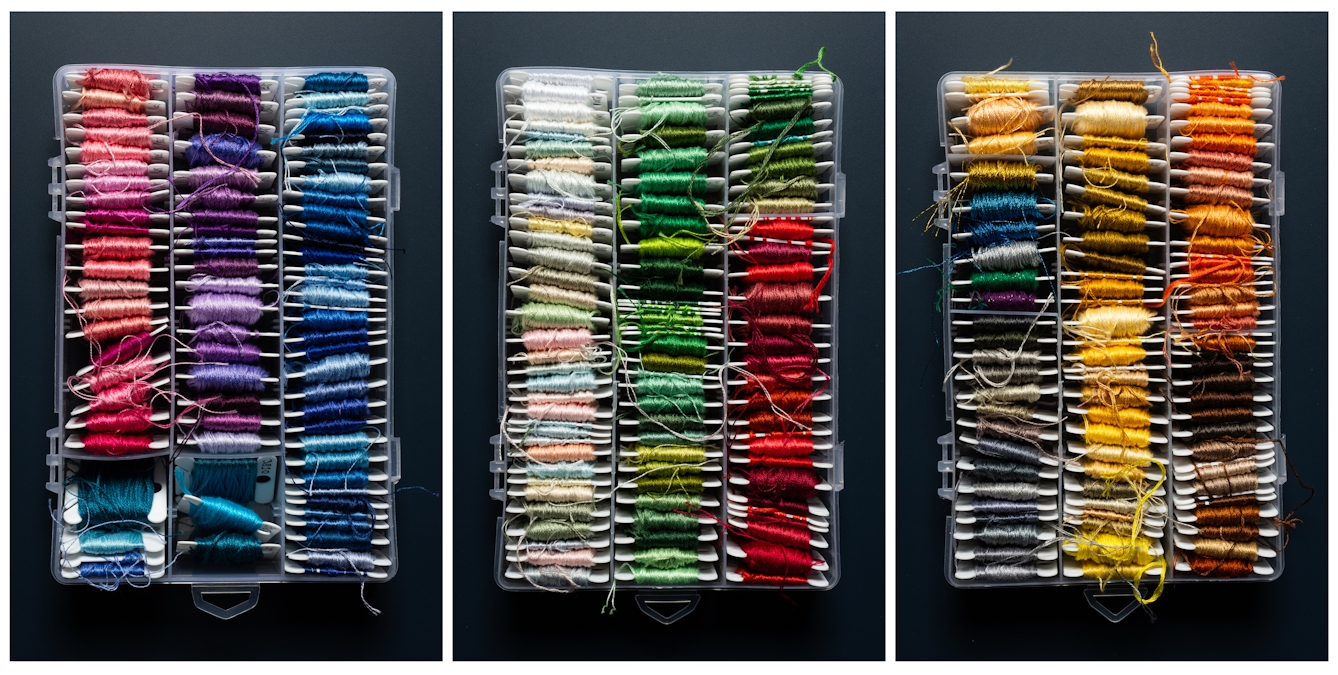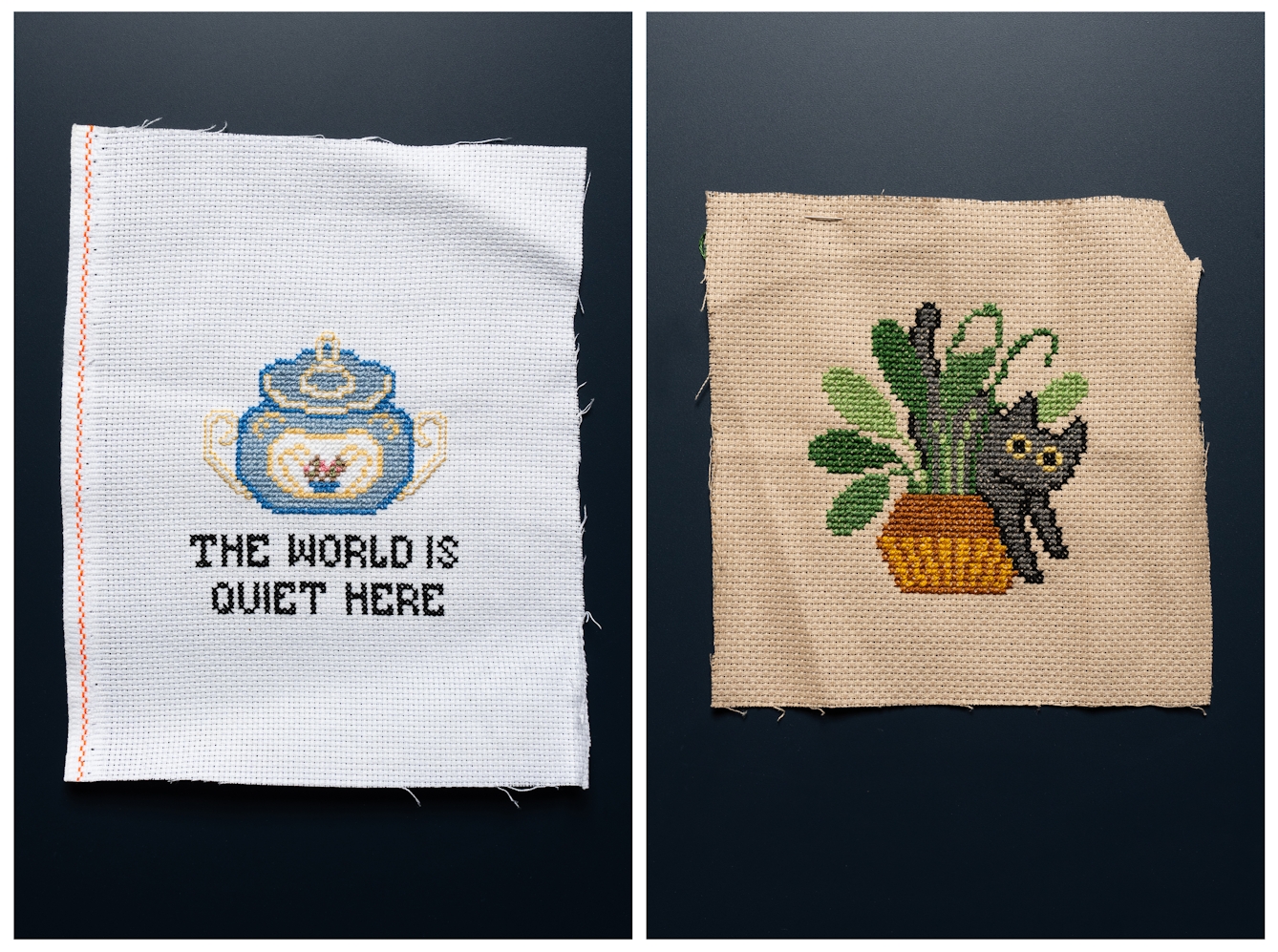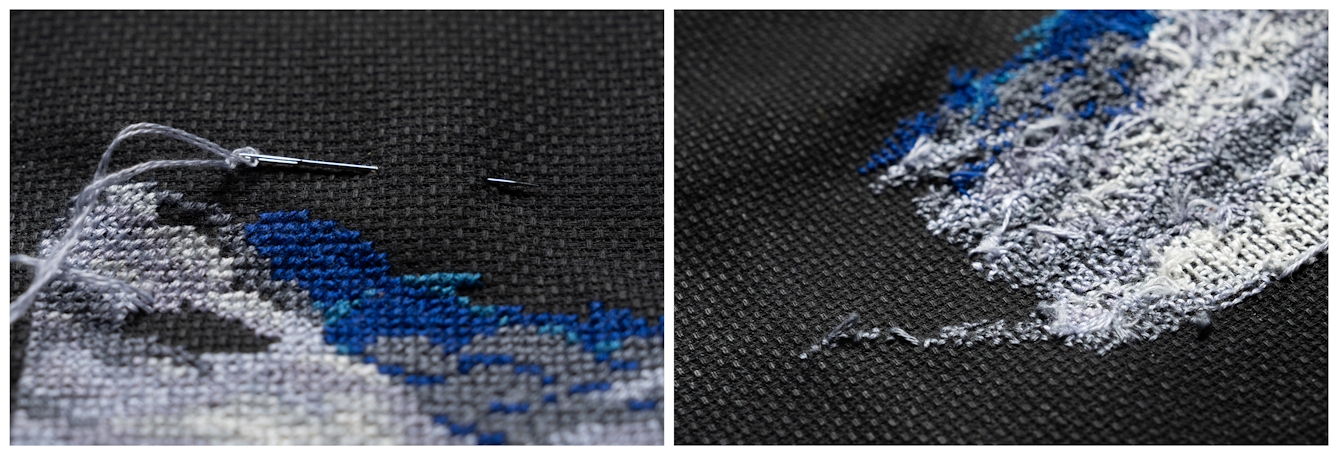Software engineer Alex Chan sees some benefits to hyperfocus, such as when completing programming projects at work. But after finding that whole days were being lost to cross-stitch at home, Alex has become wary of succumbing to the lure of hyperfocus too often.

I spend a lot of my free time doing cross-stitch. I find the process quite relaxing. I don’t have to think too hard about what I’m doing; I just stitch according to a pattern designed by somebody else. A lot of my work is digital and ephemeral, so it’s nice to create something tangible and physical from my hobby.
Initially I only did small projects – patterns I could complete in a few hours or days – but I got more ambitious during the Covid lockdowns. Because I was spending every evening at home and I lived alone, I had plenty of time to stitch, so I tackled bigger and bigger projects. My biggest project has nearly 90,000 stitches and took 15 months to complete.
That might seem like a daunting task, and more than one friend has said they could never finish something that big. I can see why – it’s hundreds of hours of work, and it’s easy to imagine getting bored or distracted or just not having enough free time. But finishing these projects has never been an issue for me. If anything, the issue is that once I start, I can’t not finish.
What lets me tackle these large projects is my capacity for hyperfocus. When it strikes, hyperfocus allows me to focus on a single idea for an incredibly long time without really trying. I don’t have to motivate myself or to deliberately try to focus – it just happens. When I’m hyperfocusing on a craft project, I can do hundreds of stitches in one go, and I barely notice the time passing.
This behaviour is commonly associated with ADHD, although it defies the common stereotype that ADHD is an inability to pay attention or maintain focus.
Hyperfocus isn’t just the ability to maintain focus for a long period of time – it’s the inability to focus on anything other than the topic at hand.

“My biggest project has nearly 90,000 stitches and took 15 months to complete.”
At the right time, on the right task, hyperfocus can be amazing. I’ve done some of my best work in a hyperfocused state, when my brain wasn’t thinking about anything else but the task at hand. I wrote one of my favourite essays at 3 am, because my brain latched onto an idea and I couldn’t do anything else (including sleep) until I’d written the whole thing.
But it comes with a cost.
Superpower or double-edged sword?
Some people talk about hyperfocus as a superpower, but I see it more as a double-edged sword. It would be an incredible trait to have on demand, but it doesn’t work that way. I can’t choose why or when I enter a state of hyperfocus.
There are times when I have a big project that would really benefit from a burst of focused time, but I can’t get my brain to engage. Case in point: this article was on my to-do list for months, and it just needed a few hours of dedicated writing, but my brain would not engage when I sat down to write. Until one Sunday evening when I was about to go to bed, and suddenly all I could think about was writing.
And hyperfocus isn’t just the ability to maintain focus for a long period of time – it’s the inability to focus on anything other than the topic at hand. Once I enter a state of hyperfocus, it’s hard to get out. Sometimes it digs in, and it doesn’t let go until I reach some sort of conclusion.
When I was working on my biggest cross-stitch piece (which I’d nicknamed “the monster”), there were often weekend days where I did nothing but stitch. I’d look out the window, admire the sunshine, and think about going outside to enjoy it – then I’d go to do “just a few stitches” after breakfast, and I wouldn’t stop until it was time to make dinner. I accidentally got stuck in a state of hyperfocus, and I spent the whole day producing tiny coloured stitches.
This also causes issues at work. It’s great when my hyperfocus allows me to concentrate and write a piece of really high-quality code. Programmers often talk about getting “in the zone”, and hyperfocus is that zone for me.

“I accidentally got stuck in a state of hyperfocus, and I spent the whole day producing tiny coloured stitches.”
Hyperfocus is less great when I go into a meeting and my brain is still focusing on a different task. I’m distracted and inattentive, I miss what’s going on, and I come across as rude.
Whole days stuck in hyperfocus
As I’ve become more aware of my hyperfocus, I want to avoid triggering it at the wrong time. I can’t always control it, but I can avoid offering it a tempting target. (I sometimes say it needs “careful feeding” – I don’t want to stop it completely, but nor do I want it all the time.)
I’ve noticed that there are certain tasks where I’m more likely to get stuck in a hyperfocus state. Programming and reading books are two all-too-frequent examples. I avoid starting them if I know that a burst of hyperfocus would be an issue. For example, I rarely code when I’m working in the office because another meeting is always around the corner.
But cross-stitch is by far the worst example. On big projects, there’s almost unlimited scope to set off my hyperfocus. Elsewhere, my focus breaks when I reach some sort of conclusion, but there’s no conclusion when I’m stitching on a really big canvas. There’s just a continuous stream of stitches to be done, and there aren’t any stopping points or obvious intervals. There have been days when I’ve done nothing but stitch, and I don’t realise until the sky’s dark and I’m getting tired.
I’ve lost myself in massive projects, and later I’ve wondered if they were really the best use of my time. I’d make all sorts of plans about seeing my friends, going outdoors, enjoying the nice weather, and then I unintentionally lost the entire day. It’s a shame, because I do enjoy doing these projects and the finished piece, but I don’t enjoy the lost days!
Controlling the triggers
Before the monster, my projects kept getting bigger. I’d pick up a pattern, stitch it to completion, and then roll straight into something else. These days, I’m more cautious about starting new projects and I’ve avoided anything too big. If my brain does get stuck on a particular pattern, I’m going to lose hours or days rather than weeks or months. There are big patterns I want to make, but I’m avoiding them for now.

“There have been days when I’ve done nothing but stitch, and I don’t realise until the sky’s dark and I’m getting tired.”
I’m trying not to say I’m never going to do another big project (even though I have said exactly that to several friends and family members). It would sound like somebody writing a Facebook post to say that they’re leaving Facebook – you wouldn’t believe me, and I’d barely believe it either. ‘Never’ is a big word. But I’m avoiding the bigger cross-stitch patterns for now and trying to avoid other large craft projects that might fill the gap.
If hyperfocus was something that I could stop and start on demand, it would be amazing. But it’s not. As I’ve become more aware of it, I’m trying to make choices to avoid its worst effects. I spend a lot of my free time doing cross-stitch, but I don’t want to spend all my free time that way.
Not everybody gets hyperfocus, and among those that do, different people get stuck doing different things. For me, it’s cross-stitch and computers. For somebody else, it might be gaming or gardening.
Although it’s not something we can start and stop on demand, I’ve found it helpful to look for patterns – to look for the activities that trigger it for me. I don’t want to get rid of it completely, but I do want to control it better. Knowing what causes it has helped me reduce the amount of time it steals unexpectedly.
About the contributors
Alex Chan
Alex is a software developer with a particular interest in digital preservation. When not at a computer, they can often be found with needle in hand or dance shoe on foot.
Steven Pocock
Steven is a photographer at Wellcome. His photography takes inspiration from the museum’s rich and varied collections. He enjoys collaborating on creative projects and taking them to imaginative places.

